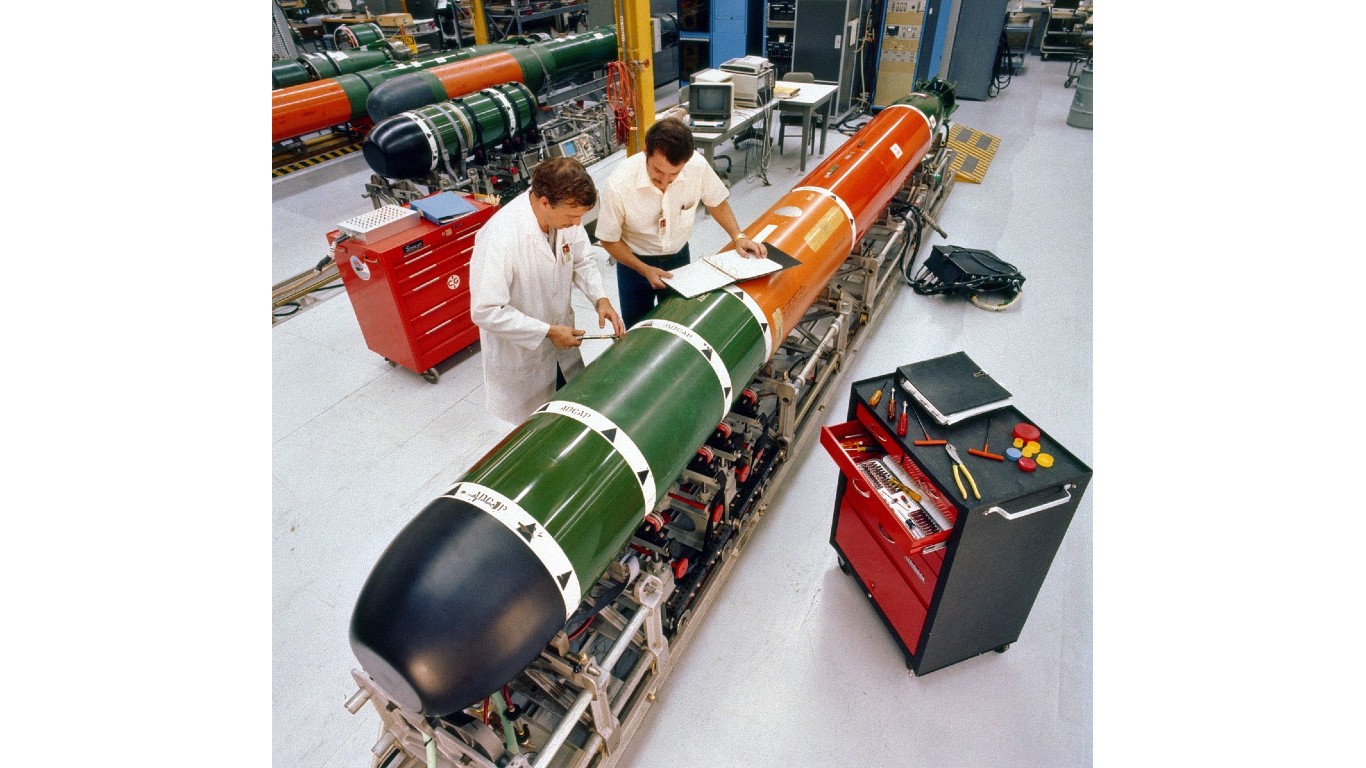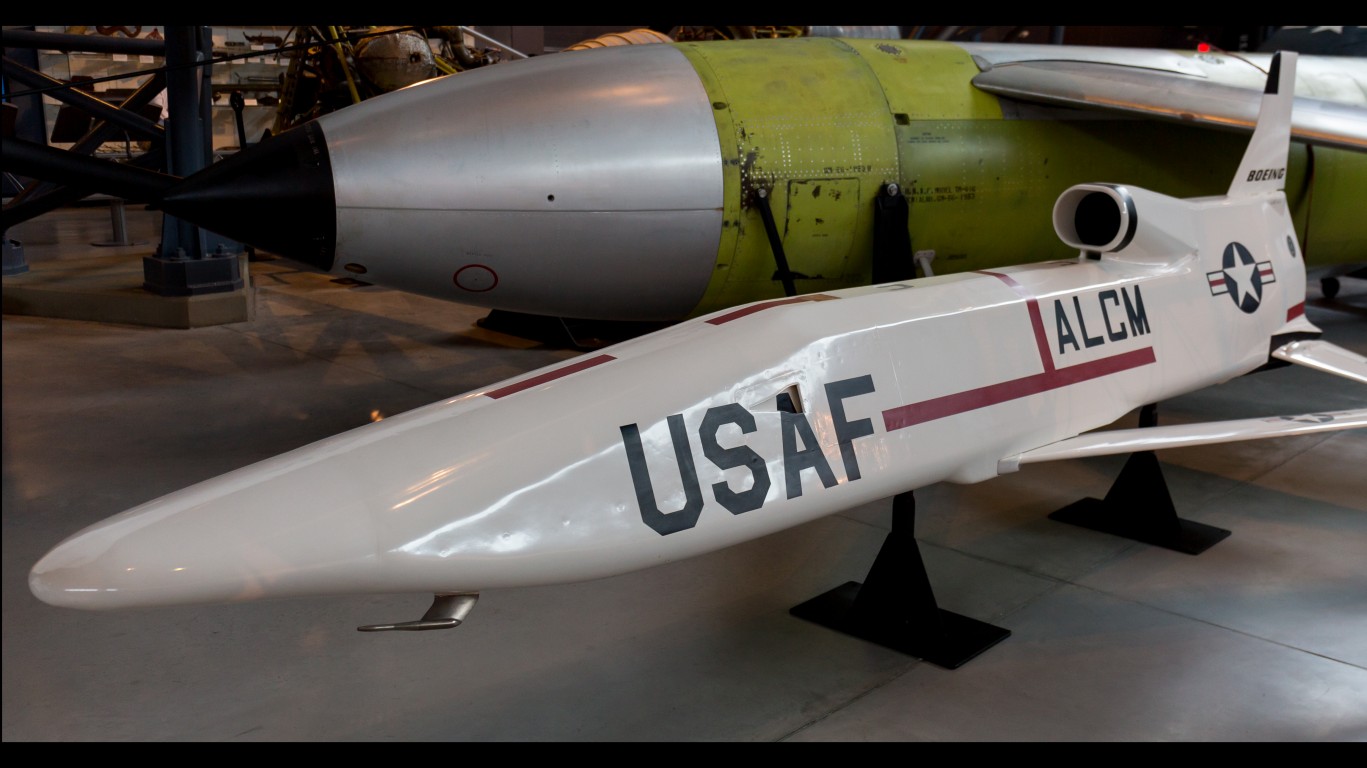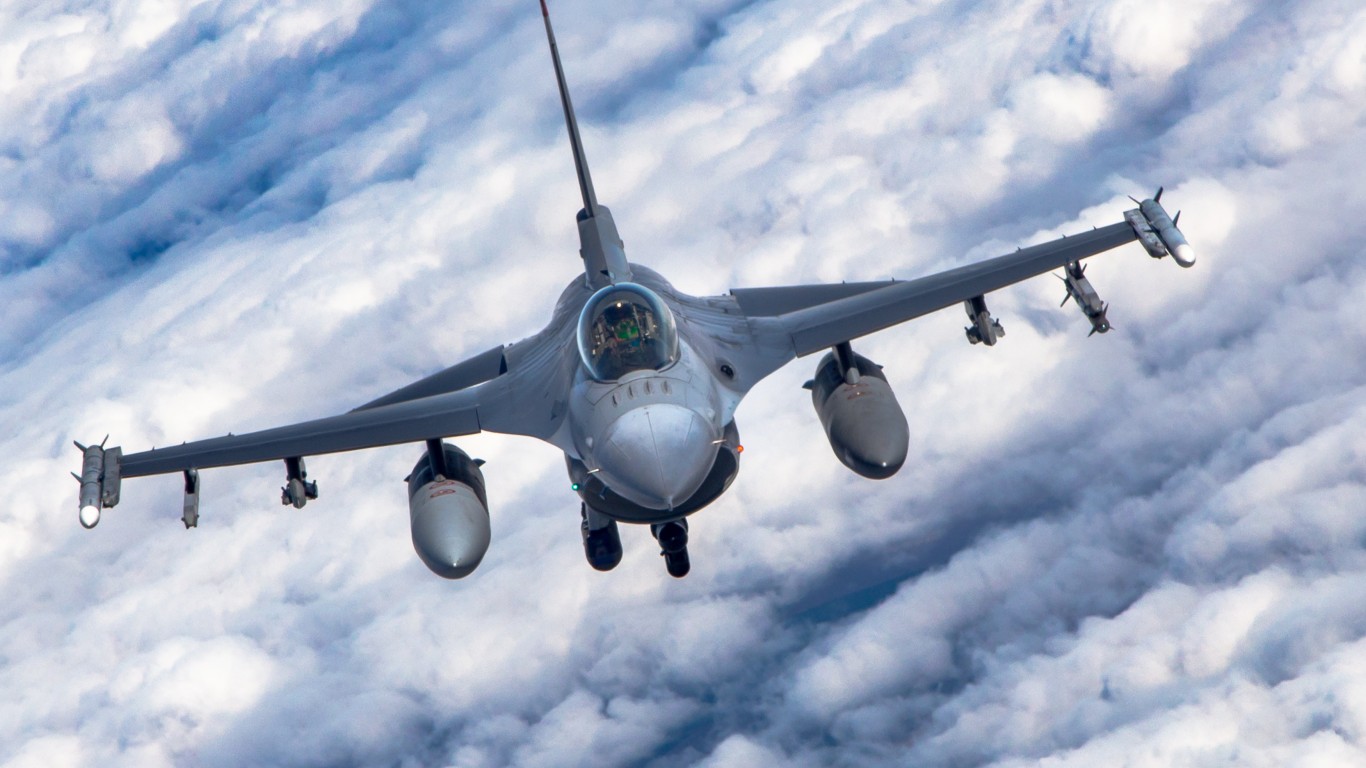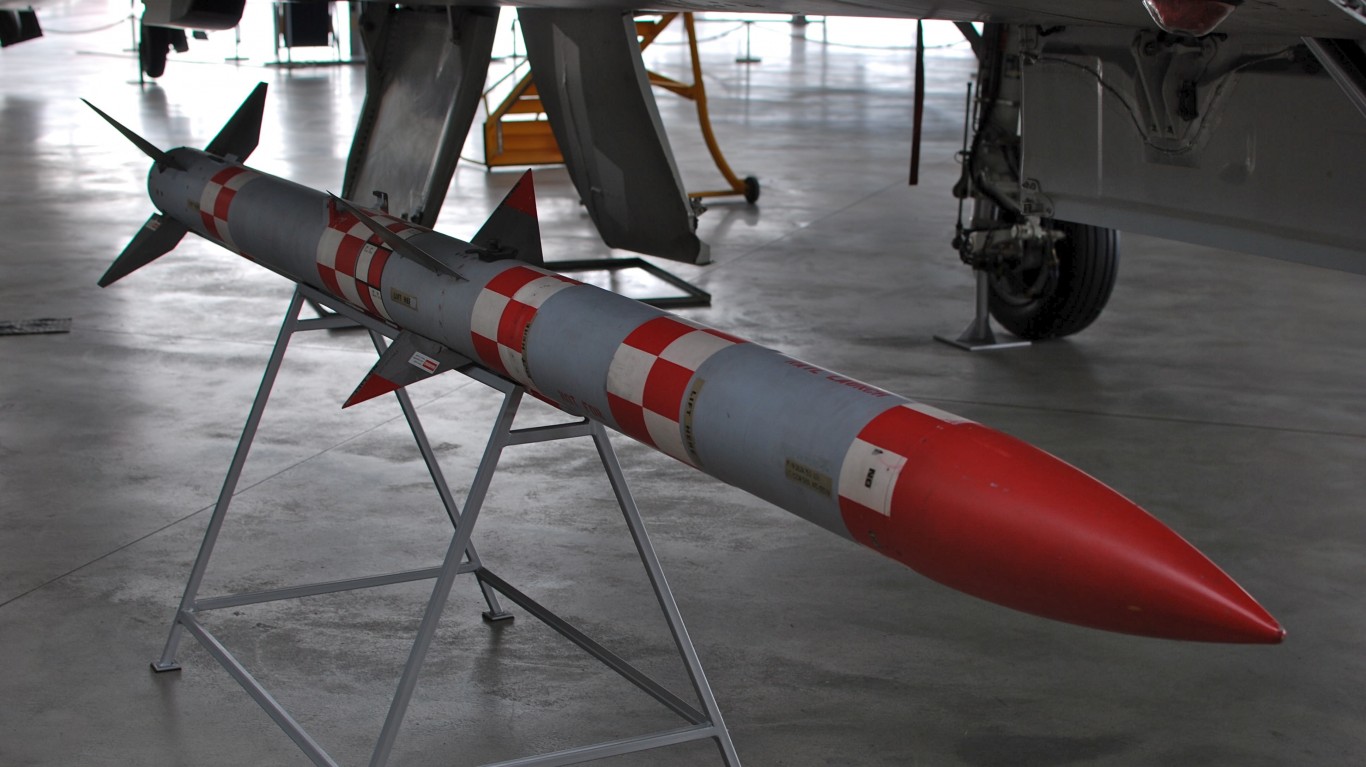
After completing a war games exercise last month, The U.S. House China committee advanced a number of suggestions to congress. One of the recommendations is for the U.S. government to establish a weapons stockpile, to be given to Taiwan should its neighbor China choose to take the path Russia did in Ukraine.
Earlier this year, President Biden signed the National Defense Authorization Act for the 2023 fiscal year. Included in the $858 billion defense spending is $2 billion in loans to Taiwan, also specifying that the island nation may receive up to $10 billion over the next five years to modernize its armed forces. The NDAA also includes an additional $2 billion in loans to buy weapons and other military services from the United States. (Here are the US Military’s 15 Weapons of the Future.)
In order to receive the $10 billion in foreign military financing grants, the U.S. secretary of state must certify to Congress that Taiwan is increasing its own spending on the country’s defenses.
Bradley Bowman and retired Rear Admiral Mark Montgomery, writing in Defense News last June, noted the “lethargic” U.S. process of delivering military goods to Taiwan:
“Permitting this meandering and unfocused process to persist would ignore one of the most important lessons of the war in Ukraine: The United States should spend less time worrying about provoking authoritarian bullies and more time urgently helping threatened democracies before an invasion or attack begins.”
The United States and Taiwan, officially, the Republic of China, signed a mutual defense treaty in 1954 that remained in effect until 1980. In 1979, President Jimmy Carter officially established diplomatic relations with Taiwan, and Congress enacted the Taiwan Relations Act, which states that “the United States will make available to Taiwan such defense articles and defense services in such quantity as may be necessary to enable Taiwan to maintain a sufficient self-defense capability.”
Carter authorized U.S. arms sales to Taiwan under the new legislation in 1979 and 1980. Taiwan was authorized to purchase 48 F-5E fighter jets, 500 air-to-ground Maverick missiles, the anti-tank BGM-71 TOW system, Hawk surface-to-air missiles, and the self-propelled Chaparral surface-to-air system. The total cost of these weapons was just over $550 million.
Not all the weapons authorized, then or now, have been delivered. In some cases, U.S. stockpiles could not be drawn down. In others, the weapons were no longer being manufactured, and in others yet, Taiwan changed its mind, as it did in August of this year. Though some figures may be different, see every airplane in Taiwan’s air force.
Here’s a look at eight major weapons systems that have recently been authorized for sale or to provide Taiwan. The list is not comprehensive and does not include activities or items needed to operate and maintain these systems.
Click here to see the weapons the U.S. sold to Taiwan.

MK-48 Torpedo
The Mark-48 is a self-propelled anti-submarine heavyweight torpedo. The U.S. authorized the sale to Taiwan of 54 Mark-48s in 2002, the sale of another 46 in 2017, and 18 more in 2020. The latest version includes the advanced capability (ADCAP) variant. The MK-48 may be wire-guided and may use active or passive homing. Based on the $180 million total value of the 2020 order for 18 torpedoes, each missile costs $10 million, including spare parts, support, training, and other items. Different versions of the torpedo are now manufactured by both Raytheon and Lockheed Martin.
[in-text-ad]

AGM-84 Harpoon
The AGM-84 Harpoon is a stand-off land attack missile (SLAM) used by both the U.S. Air Force and Navy. The U.S. first authorized the sale of the weapon to Taiwan in 1997 (54 missiles). A total of more than 500 missiles, in various configurations, have been authorized along with launchers and other required equipment. The missiles cost about $1.5 million apiece, and Biden in September approved the sale of 400 Harpoon missiles and related equipment to Taiwan, valued at a total of $2.37 billion. The Harpoon missiles are manufactured by Boeing.

MGM-168 ATACMS and M142 HIMARS
The Army tactical missile system (ATACMS) is a short-range, surface-to-surface ballistic missile that entered service in 1986. The Trump administration authorized the sale of 64 missiles to Taiwan in 2020, along with 11 M142 high-mobility artillery rocket systems (HIMARS) launchers and related equipment and support. The total cost of the authorization was $436.1 million. The MGM-168 and the HIMARS launchers are manufactured by Lockheed Martin.
M109A6 Paladin
The Paladin is a self-propelled, tracked 155 mm howitzer designed to provide indirect-fire support to armored brigade combat teams (ABCT). Since 2000, U.S. presidents have authorized the sale of 330 Paladins to Taiwan. Biden authorized the sale of 40 of the latest version of the system, valued at $750 million. In August, Taiwan’s military decided to forego the purchase of the 40 systems in favor of acquiring 29 HIMARS systems (up from 11 systems) and 84 ATACMS platforms (up from 20) as originally planned and approved. The Paladin is built by BAE Systems.
[in-text-ad-2]
AAV7A1
The AAV7A1 is an amphibious armored personnel carrier equipped with either a grenade launcher or a 25mm gun and a .50-caliber machine gun. It is used by the Marine Corps as a ship-to-shore carrier for up to 25 troops, a crew of three, and is a tracked vehicle for operating on land. In 2001, President George W. Bush authorized the sale of 54 AAV7A1 vehicles to Taiwan. The vehicles are manufactured by BAE Systems Inc.

Patriot Missile Systems
President Bill Clinton authorized the first sale of 200 Patriot missile systems to Taiwan in 1993. The name is an acronym for “phased array tracking radar to intercept on target.” The Patriot system includes high-performance radar systems and anti-ballistic missiles mounted on a mobile platform. President Barack Obama later authorized the sale of 114 Patriot missiles to Taiwan in 2010, and Biden authorized additional engineering and contractor technical assistance this year.
A Patriot missile battery costs about $1.1 billion, including $690 million for the missiles and $400 million for the rest of the system. A full battery includes radar, a control station, power generators, five to eight launchers, and up to 16 missiles per launcher. Raytheon is the manufacturer.
[in-text-ad]

AIM-9X Sidewinder Missiles
The AIM-9X Sidewinder, an air-intercept missile that first entered service in 1956, has gone through many updates and remains the most popular air-to-air missile in the arsenal of Western countries. Biden authorized the sale of the missiles to Taiwan at a value of up to $85.6 million. Because it has been in service for more than 50 years, the missile is also one of the least expensive at unit price of around $381,000. Lockheed Martin builds the missile, and Boeing has a contract to support the system that runs through 2055.
AIM-120 AMRAAM
Clinton authorized the only sale of the AIM-120 AMRAAM (advanced medium-range air-to-air missile) to Taiwan in 2000. The authorization included 200 missiles and 292 launchers and other support equipment with a total value of $150 million. A Forbes report from November 2021 estimated the cost of 280 AIM-120s to Saudi Arabia at more than $2.3 million per missile, including all the ancillary costs involved with the system. Unlike its predecessor, the AIM-7 Sparrow, the AMRAAM is a “fire and forget,” beyond-visual-range missile that does not require guidance from the aircraft once it has been fired. The missiles are manufactured by Raytheon.
Take This Retirement Quiz To Get Matched With An Advisor Now (Sponsored)
Are you ready for retirement? Planning for retirement can be overwhelming, that’s why it could be a good idea to speak to a fiduciary financial advisor about your goals today.
Start by taking this retirement quiz right here from SmartAsset that will match you with up to 3 financial advisors that serve your area and beyond in 5 minutes. Smart Asset is now matching over 50,000 people a month.
Click here now to get started.
Thank you for reading! Have some feedback for us?
Contact the 24/7 Wall St. editorial team.

 24/7 Wall St.
24/7 Wall St.
